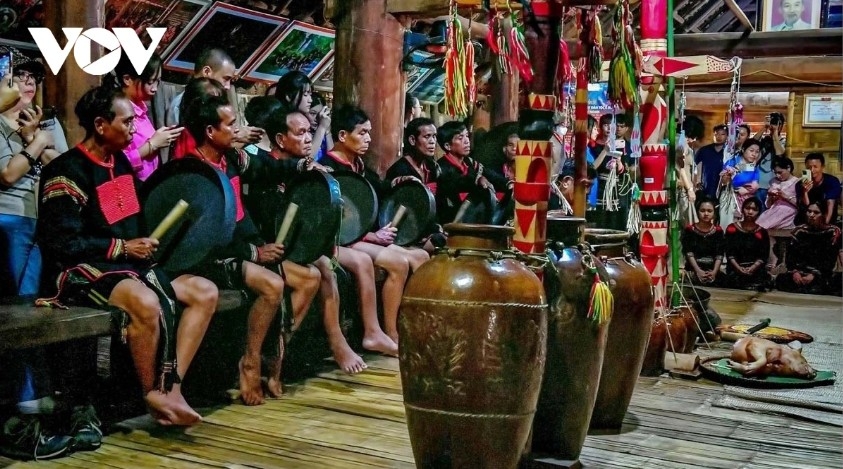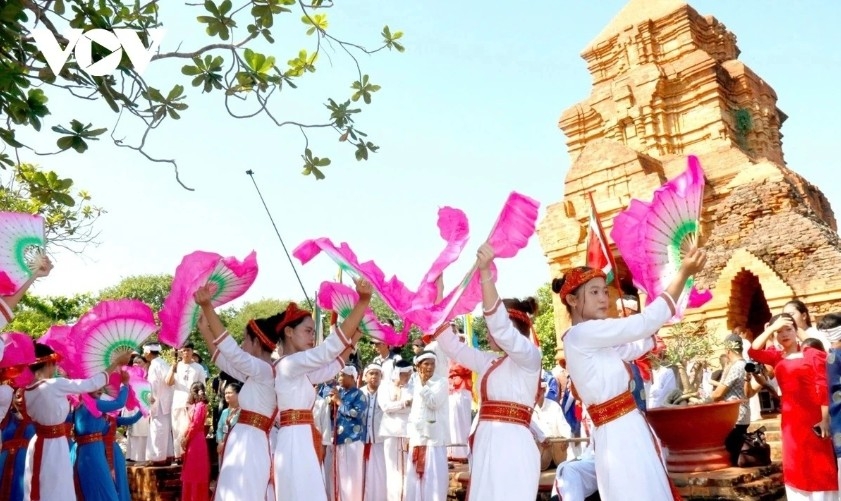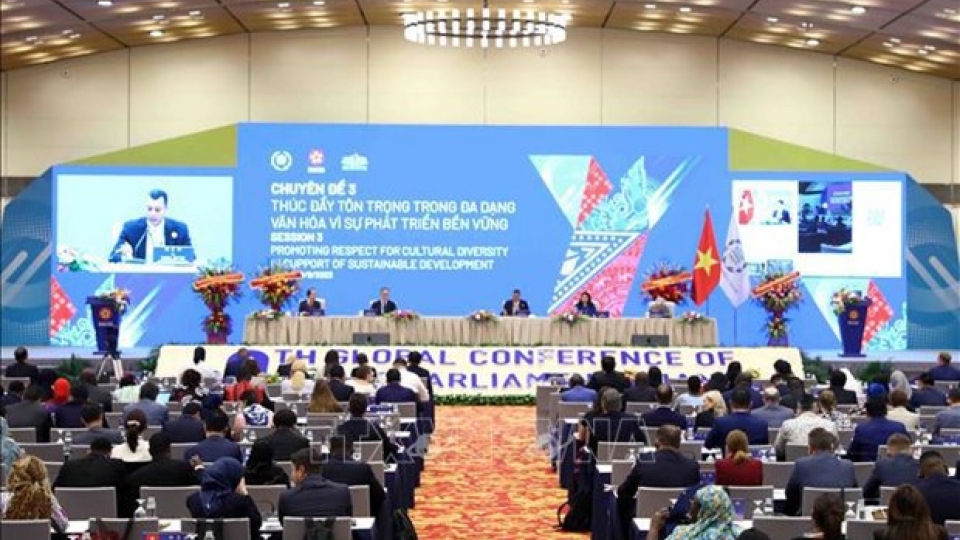Cultural diversity-Vietnam’s competitive advantage in international integration
VOV.VN - Vietnam, rich in cultural heritage with diverse regions, ethnicities, beliefs, and customs, views this diversity not only as a precious heritage but also as a strategic resource for sustainable development and strengthening its national standing in the context of international integration.

Diverse cultural landscape of Vietnam
At a recent scientific workshop “Building a Unified Vietnamese Culture in Diversity, 1975-2025” in Hanoi, Dr. Nguyen Tien Thu, Vice Director of the Institute of Culture and Development, Ho Chi Minh National Academy of Politics, stated that Vietnam possesses a complex socio‑cultural structure, clearly reflected in its richness of cultural regions, ethnicities, religions, customs, and lifestyles.
It can be divided into three major cultural regions: the North, with the Red River Delta as the centre of wet‑rice agricultural civilisation, preserving distinctive village culture, worship of village tutelary gods, agricultural rituals, and folk art forms such as quan họ (love duets), ca tru (ceremonial singing) and cheo (traditional opera).
Central Vietnam a cultural crossroads of Viet, Cham, Hoa, and Khmer influences, where Cham architecture, Hue royal court music (nha nhac), classical tuong opera, and numerous traditional craft villages flourish.
Southern Vietnam a multi-ethnic space (Viet, Hoa, Khmer, Cham) marked by an open and dynamic lifestyle, rich beliefs, distinctive folk festivals (Ok Om Bok, Nghinh Ong), and don ca tai tu (southern amateur chamber music).
Alongside 54 ethnic groups, each community contributes its own distinct features in costume, cuisine, folk songs, musical instruments, festivals, and folk knowledge. Ethnic cultures extend beyond surface expressions to encompass systems of values, beliefs, and approaches to nature, society, and humanity.
“Cultural diversity is not only the result of geography and history but also the product of cross-regional, cross-ethnic, and cross-era cultural exchanges. At present, Vietnam’s cultural landscape continues to expand in expression with the addition of urban culture, digital culture, and popular culture, thereby enriching the nation’s cultural identity,” analyzed Dr. Nguyen Tien Thu.
Cultural heritage- a special resource
Dr. Vu Dieu Trung, Director of the Cultural Heritage Data Centre under the Institute of Culture, Arts, Sports and Tourism of Vietnam, affirmed that in today’s global economic development, cultural heritage is regarded as a “special resource.”
Reality shows that localities that perform well in preserving cultural heritage and meeting the spiritual and cultural needs of their communities also achieve socio-economic development while ensuring national security and defence.
To achieve this, raising public awareness of the importance of preserving and promoting cultural heritage is essential, as it is not only an act of patriotism but also a way to enrich and diversify Vietnamese culture, while building resilience against the influence of foreign cultural elements.
Equally important is strengthening national pride and confidence in Vietnam’s cultural identity. Elder members of communities should regularly remind and encourage younger generations to participate in preserving and promoting the nation’s cultural heritage. Moreover, safeguarding cultural heritage must be closely linked with promoting its image in order to boost tourism and directly contribute to the socio-economic development of localities.
Echoing this view, Assoc. Prof. Dr. Nguyen Thị Thu Phuong, Director of the Institute of Culture, Sports and Tourism of Vietnam, said that in the process of international integration, cultural diversity and unity create Vietnam’s intrinsic vitality and have the potential to transform into a form of national soft power.
She proposed piloting such an initiative in Hoi An, recognized by UNESCO as an Ancient Town and World Heritage Site (1999) and designated as a City of Craft and Folk Art Creativity (2023). Hoi An is well positioned to become a pilot model for integrating heritage with creativity.
Hue, recognized by UNESCO as the Complex of Hue Monuments (1993), needs to prepare a dossier to join the UNESCO Creative Cities Network in the field of Gastronomy, with a target year of 2027.
Hanoi, recognized by UNESCO as a Creative City in the field of Design (2019), has the potential to become a pilot model linking heritage with contemporary creative industries, especially in design, handicrafts, and digital creativity. It can serve as a leading example to inspire other major cities.
Recognized by UNESCO as a Creative City of Music (2023), Da Lat boasts the potential to serve as a pilot model for integrating music with eco-tourism, resort tourism, and adventure tourism.
“The pilot implementation in these localities demonstrates the ability to transform unity in diversity of cultural expressions into a systematic cultural soft power based on the principle: not only preserving heritage but also repositioning it to create new value; not only maintaining identity but also turning it into an internationally competitive brand; not only promoting but also creating intrinsic attractiveness, making Vietnam’s heritage and creativity a soft power capable of persuading the international community. This is the key for Vietnam to turn its abundant potential into real advantage as a contribution to enhancing Vietnam’s standing,” said Assoc. Prof. Dr. Nguyen Thi Thu Phuong.

Cultural development closely linked to urban planning, infrastructure, tourism, and creative industries
Assoc. Prof. Dr. Le Thi Thu Phuong from the Institute of Culture and Development emphasised regional linkage solutions and believed that cultural planning should be integrated into the overall socio‑economic development planning of the region. Cultural development needs to be closely tied to urban planning, infrastructure, tourism, and creative industries within the region, thus creating favourable conditions for culture to spread and be effectively promoted.
Phuong cited the “one product – multiple destinations” model being developed in the Northwest and Northeast regions, along with the “Red River Cultural‑Tourism Corridor” programme, as examples demonstrating that regional linkage not only enriches cultural products but also fosters consensus in preserving traditional values.
To establish regional cultural value chains, each region needs to identify its distinctive cultural strengths and develop product chains linking localities. Examples include: the Northwest region-ethnic minority cultural‑tourism‑culinary chains; the Central region-world heritage chains, Cham culture, folk festivals, and royal court music; the Mekong Delta-water culture chains, don ca tai tu (southern Vietnamese chamber music), traditional festivals, and floating markets.
"Regional cultural development coordination committees should be established, involving representatives from localities within the region, the Ministry of Culture, Sports and Tourism, experts, and social organisations. These committees would be responsible for developing strategies, coordinating linked cultural activities, and supervising their implementation.
Another key aspect is promoting the movement of ‘people as cultural subjects’. Communities must be placed at the centre of cultural preservation and development efforts. Only when people understand, cherish, and take pride in their own culture will regional linkage become practical and sustainable," Dr. Le Thi Thu Phuong stressed.
Valuing cultural heritage as a “special resource” will preserve national identity, promote tourism, creative industries, and socio-economic development, and consolidate great national unity. In an era of deep integration, balancing preservation with innovation will help Vietnamese culture reach the world and affirm the nation’s standing and resilience in the international arena.



